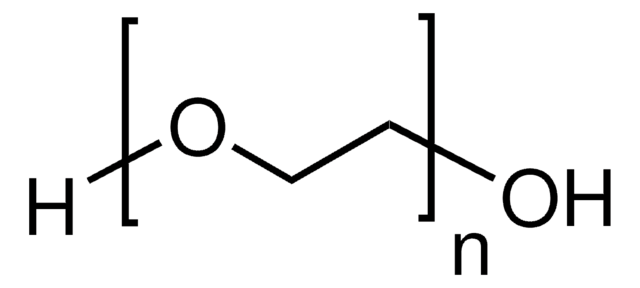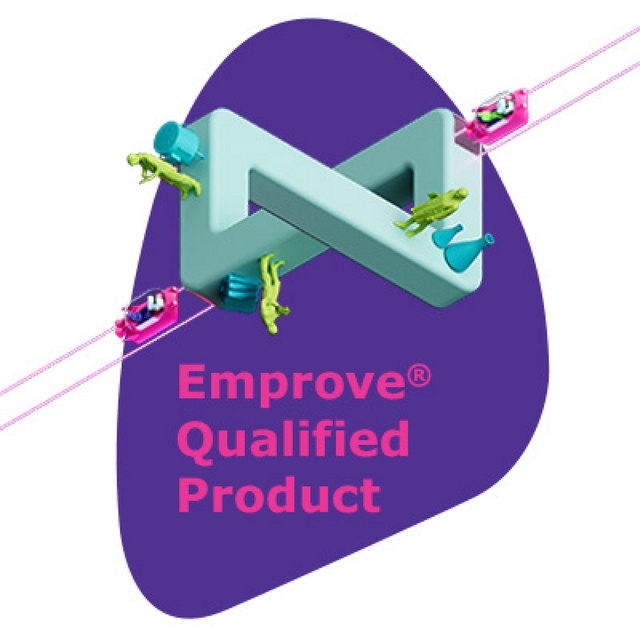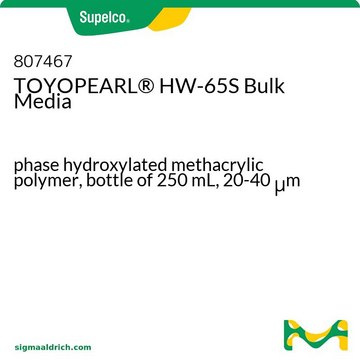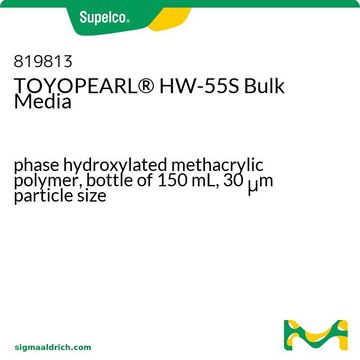8.19015
Polyethylene glycol
3000, for synthesis
Synonym(s):
Poly(ethylene glycol), Polyethylene glycol 3000, Polyglycol, Polyethylene oxide, Polyoxy ethylene, PEG 3000, PEG
About This Item
Recommended Products
vapor pressure
<0.1 hPa ( 20 °C)
Quality Level
form
liquid
autoignition temp.
420 °C
potency
28000 mg/kg LD50, oral (Rat)
>20000 mg/kg LD50, skin (Rabbit)
pH
4-7 (20 °C, 100 g/L in H2O)
mp
55-58 °C
transition temp
flash point 270 °C
density
1.21 g/cm3 at 20 °C
bulk density
400‑500 kg/m3
Looking for similar products? Visit Product Comparison Guide
1 of 4
This Item | 819815 | 819813 | 814688 |
|---|---|---|---|
| separation technique size exclusion (SEC) | separation technique size exclusion (SEC) | separation technique size exclusion (SEC) | separation technique size exclusion (SEC) |
| particle size 20-40 μm | particle size 30 μm | particle size 30 μm | particle size 30 μm |
| matrix active group hydroxylated methacrylic polymer phase | matrix active group hydroxylated methacrylic polymer phase | matrix active group hydroxylated methacrylic polymer phase | matrix active group hydroxylated methacrylic polymer phase |
| technique(s) LPLC: suitable | technique(s) LPLC: suitable | technique(s) LPLC: suitable | technique(s) LPLC: suitable |
| product line TOYOPEARL® | product line TOYOPEARL® | product line TOYOPEARL® | product line TOYOPEARL® |
Application
- A surface-modification agent in the synthesis of monodispersed magnetite colloidal magnetic nanoparticles.[1]
- A precipitating agent in the crystallization of oligoxyloglucan reducing-end specific cellobiohydrolase (OXG-RCBH) by the hanging-drop vapor diffusion method.[2]
- A solvent and phase-transfer catalyst (PTC) in the application of aqueous biphasic reactive extraction.[3]
- An additive in the preparation of polysulfone membrane to study the porometry.[4]
Analysis Note
Melting range (lower value): ≥ 55 °C
Melting range (upper value): ≤ 59 °C
Average molecular mass: 2700 - 3300
Identity (IR): passes test
Storage Class Code
10 - Combustible liquids
WGK
WGK 1
Flash Point(F)
281.5 °F - closed cup
Flash Point(C)
138.6 °C - closed cup
Certificates of Analysis (COA)
Search for Certificates of Analysis (COA) by entering the products Lot/Batch Number. Lot and Batch Numbers can be found on a product’s label following the words ‘Lot’ or ‘Batch’.
Already Own This Product?
Find documentation for the products that you have recently purchased in the Document Library.
Our team of scientists has experience in all areas of research including Life Science, Material Science, Chemical Synthesis, Chromatography, Analytical and many others.
Contact Technical Service




